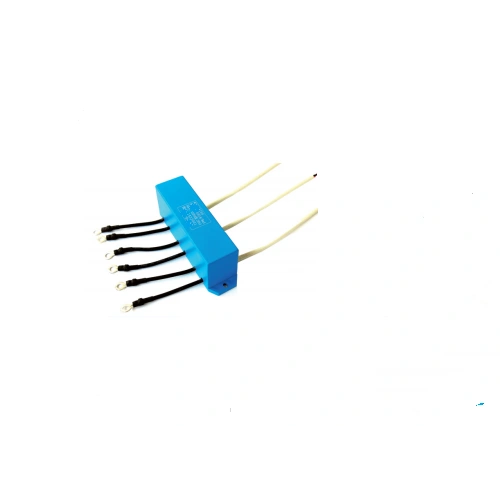Exploring Low Coercivity Magnetic Rings: Innovations in Nano Chemical Materials
Low coercivity magnetic rings are specialized magnetic materials characterized by their ability to be easily magnetized and demagnetized. Unlike high coercivity materials, which require significant magnetic force to reverse their magnetization, low coercivity materials are more versatile and responsive. This property makes them particularly valuable in various applications, especially in the field
Low coercivity magnetic rings are specialized magnetic materials characterized by their ability to be easily magnetized and demagnetized. Unlike high coercivity materials, which require significant magnetic force to reverse their magnetization, low coercivity materials are more versatile and responsive. This property makes them particularly valuable in various applications, especially in the field of nano chemical materials.
One of the primary benefits of low coercivity magnetic rings is their efficiency in energy applications. They are commonly used in inductors and transformers, where rapid changes in magnetic fields are necessary. In these devices, low coercivity materials can minimize energy losses, resulting in improved performance and efficiency. This characteristic is crucial in the design of energy-efficient systems, such as those found in renewable energy technologies.
In the realm of nanotechnology, low coercivity magnetic rings have opened new avenues for innovation. These materials can be synthesized at the nanoscale, leading to unique properties that differ significantly from their bulk counterparts. The reduction in size not only enhances the surface area-to-volume ratio but also allows for increased interactions with surrounding materials. This can lead to the development of advanced chemical sensors and catalysts, which are essential in various industrial processes.
Moreover, low coercivity magnetic rings can be utilized in drug delivery systems within the biomedical field. By embedding these rings in polymer matrices, researchers can create stimuli-responsive drug carriers that release their payloads in a controlled manner when exposed to an external magnetic field. This targeted delivery mechanism enhances the efficacy of treatments while minimizing side effects, showcasing the potential of these materials in improving healthcare outcomes.
Furthermore, low coercivity magnetic rings contribute to the advancement of data storage technologies. Their rapid magnetization and demagnetization capabilities make them ideal candidates for next-generation memory devices, where speed and efficiency are paramount. As the demand for faster and more efficient data storage solutions continues to grow, the role of low coercivity magnetic rings will likely expand, driving innovation in this sector.
In conclusion, low coercivity magnetic rings represent a significant development in the field of new chemical materials, particularly within nanotechnology. Their unique properties enable a broad range of applications, from energy systems to biomedical innovations and data storage solutions. As research and development in this area continue to advance, low coercivity magnetic rings are poised to play a pivotal role in shaping the future of technology and materials science. By understanding and harnessing the potential of these materials, industries can drive forward innovation and efficiency in various applications.
One of the primary benefits of low coercivity magnetic rings is their efficiency in energy applications. They are commonly used in inductors and transformers, where rapid changes in magnetic fields are necessary. In these devices, low coercivity materials can minimize energy losses, resulting in improved performance and efficiency. This characteristic is crucial in the design of energy-efficient systems, such as those found in renewable energy technologies.
In the realm of nanotechnology, low coercivity magnetic rings have opened new avenues for innovation. These materials can be synthesized at the nanoscale, leading to unique properties that differ significantly from their bulk counterparts. The reduction in size not only enhances the surface area-to-volume ratio but also allows for increased interactions with surrounding materials. This can lead to the development of advanced chemical sensors and catalysts, which are essential in various industrial processes.
Moreover, low coercivity magnetic rings can be utilized in drug delivery systems within the biomedical field. By embedding these rings in polymer matrices, researchers can create stimuli-responsive drug carriers that release their payloads in a controlled manner when exposed to an external magnetic field. This targeted delivery mechanism enhances the efficacy of treatments while minimizing side effects, showcasing the potential of these materials in improving healthcare outcomes.
Furthermore, low coercivity magnetic rings contribute to the advancement of data storage technologies. Their rapid magnetization and demagnetization capabilities make them ideal candidates for next-generation memory devices, where speed and efficiency are paramount. As the demand for faster and more efficient data storage solutions continues to grow, the role of low coercivity magnetic rings will likely expand, driving innovation in this sector.
In conclusion, low coercivity magnetic rings represent a significant development in the field of new chemical materials, particularly within nanotechnology. Their unique properties enable a broad range of applications, from energy systems to biomedical innovations and data storage solutions. As research and development in this area continue to advance, low coercivity magnetic rings are poised to play a pivotal role in shaping the future of technology and materials science. By understanding and harnessing the potential of these materials, industries can drive forward innovation and efficiency in various applications.








